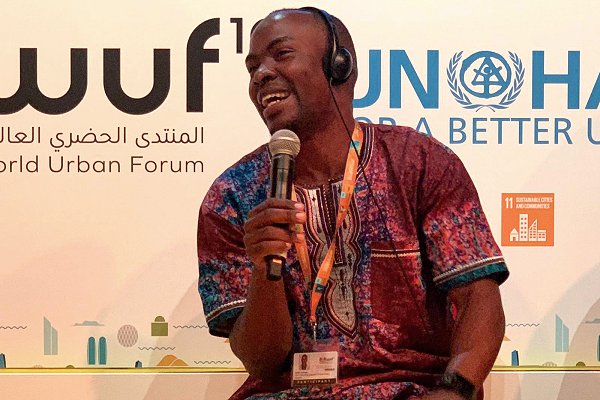
Blog: #WUF10 (cities) through a climate lens

This year’s session of the World Urban Forum (WUF 10) in Abu Dhabi, the tenth, centred on leveraging “culture, creativity and innovation” towards achieving Sustainable Development Goal 11 on cities and communities, as well as the 2016 New Urban Agenda (NUA).
Migration and displacement have become common in some cities in Europe and Africa, and in a session jointly organized by the ICRC and IFRC the need for long-term engagement with host communities was underscored.
Migrants bring cultural diversity, including custom and social norms that can be harnessed to address climate risks, but the issue of climate migrants continues to spark debate, as it did at WUF 10.
Data also featured extensively at the conference, with experts underscoring its relevance for good decision-making. Some progress has been made in ensuring data availability, but challenges persist, especially in cities and conflict areas.
Extensive sharing of data on vulnerability and exposure will enable humanitarian agencies to focus on those in most need of assistance; forecast-based financing, for example, uses scientific and socio-economic data to trigger action, but it has been difficult to find adequate data in urban areas.
The Netherlands Red Cross ‘510’ data initiative is currently working with government and other stakeholders to ensure data is available to National Societies.
Funding opportunities
The finance gap presents a major hindrance towards implementing SDG 11 and the NUA. Accessing resources through agreements such as the Green Climate Fund remains a major challenge for many local governments in developing countries.
Various sessions at WUF 10 provided insights on how barriers to climate financing might be reduced, but more questions remain than answers.
Many argued that local governments should be better positioned to access climate funds since they are closer to people and have extensive knowledge on local adaptation.
If this happens, it would present a unique opportunity for countries where FbF is established; perhaps some FbF triggers could be linked to this funding.
The UN’s Local Climate Adaptive Living Facility aims at increasing climate adaptation in least developed countries and has the potential to make this ambition a reality.
Other funding opportunities presented at WUF 10 included the EU’s Green Employment Initiative and the City Climate Finance Gap Fund.
Youthful cities
You could certainly call 2019 the year of youth influence! Young people continue to be critical to the climate issue worldwide in 2020, with the FridaysForFuture school strikes, for example.
It is estimated that 60 per cent of the urban population will be under 18 by 2030, and at WUF 10 the IFRC, Save the Children and UNICEF together sought to harness the influence of the young by forming a network of organizations working to ensure cities address their concerns.
This initiative comes at a time when the Red Cross Red Crescent flagship programme on youth and climate, Y-Adapt, is expanding to Africa, the Middle East, and the Pacific.
The trend is clear: the world is being steered toward youthful cities.
A number of WUF 10 sessions featured a growing area of our own concern at the Climate Centre, heatwaves. Some focused on understanding the risks of heatwaves while others looked at options for reducing their impacts.
I was left with two main takeaways from the sessions in Abu Dhabi. Firstly, there is an urgent need for investment in research into understanding heat risks in the global South.
Secondly, decision-makers should come up with policy options and practical interventions that focus on the most vulnerable people in cities. Our Heatwave Guide for Cities issued last year with the IFRC will play an important role in enhancing awareness of the risks of heat.
Kampala-based Eddie Jjemba, pictured here this week at the World Urban Forum in Abu Dhabi, is the Climate Centre’s Urban Resilience Adviser. (Photo: Raimond Duijsens/NLRC)